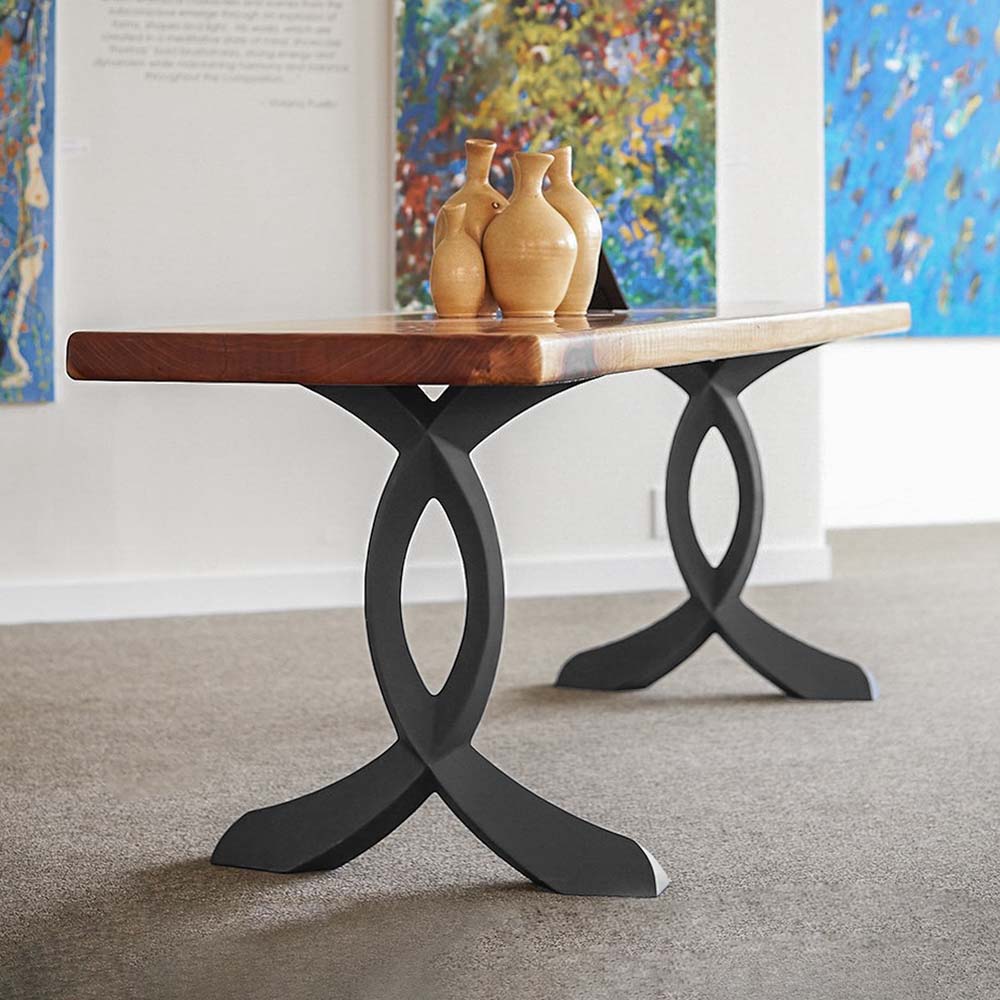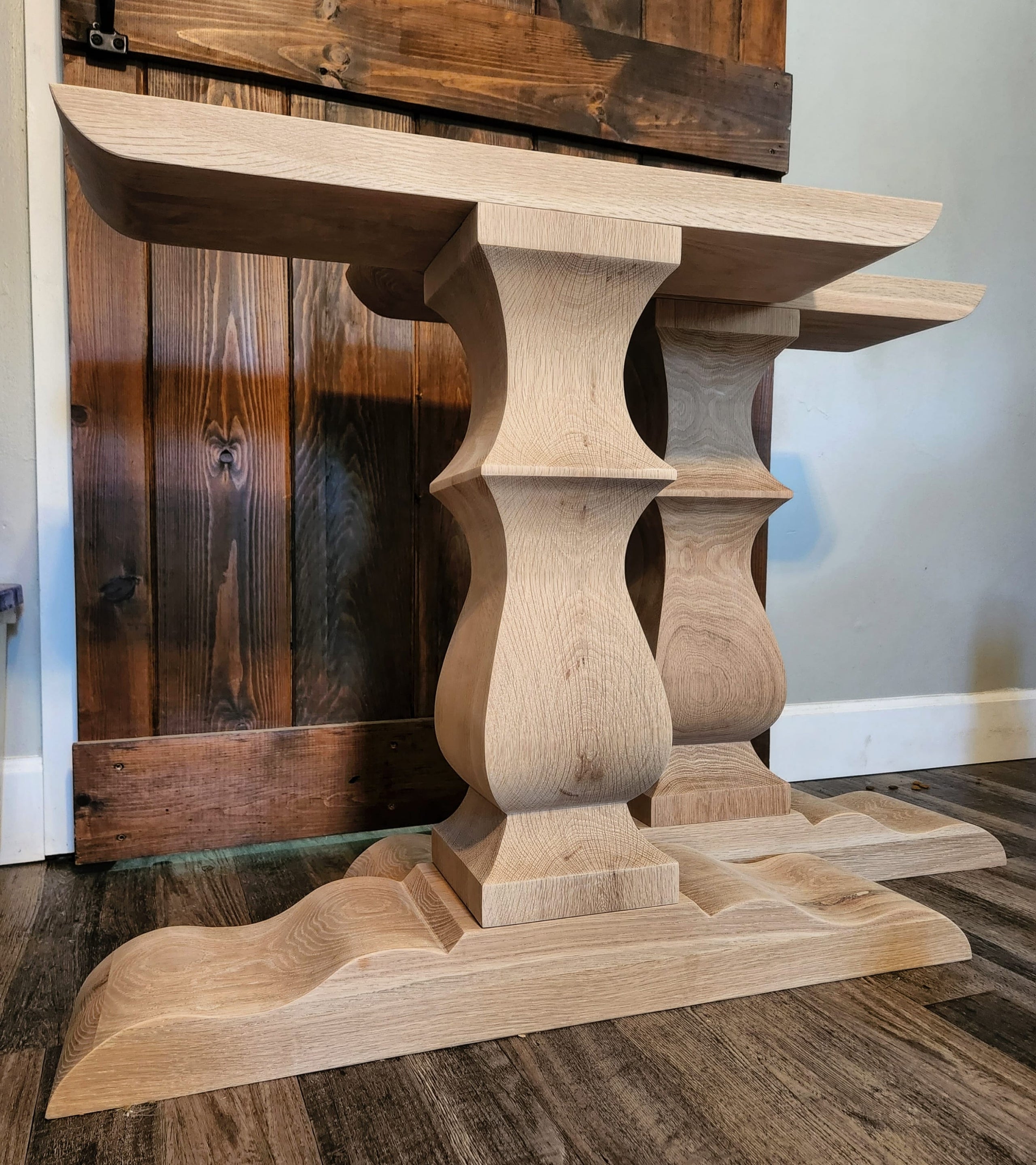Custom Dining Room Table Legs: A Stylish Addition to Any Home
Custom Dining Room Table Legs: A Stylish Addition to Any Home
Blog Article
Picking the Perfect Dining Table: What Styles Job Best for Your Home?
Choosing the perfect eating table for your home can be a nuanced process that stabilizes appearances and performance. Whether your space leans in the direction of traditional style, contemporary minimalism, rustic beauty, or industrial chic, the selection of styles readily available can satisfy varied tastes. Each style offers special benefits and difficulties that can either boost or disrupt your eating area's harmony. Recognizing exactly how various materials, shapes, and dimensions interact with your existing decoration is essential. To browse these choices efficiently and locate a table that really matches your home, take into consideration the complying with facets thoroughly.
Analyzing Your Space
Assessing the measurements and layout of your dining area is a critical initial step in choosing the best table. Begin by gauging the size and size of the space, representing doorways, windows, and various other building functions that can affect table positioning. This makes certain that your table not just fits yet also allows for comfortable activity around it.
Take into consideration the variety of individuals you typically entertain. A table should accommodate your household's daily needs while offering enough adaptability for periodic visitors. Generally of thumb, designate a minimum of 24 inches of table width each to guarantee a comfortable eating experience.
It's likewise important to preserve proper clearance around the table. Ideally, there should go to the very least 36 inches in between the table edge and wall surfaces or various other furniture, enabling easy accessibility and motion. For areas where chairs with arms or additional storage space systems like buffets are included, increasing this clearance to 48 inches is advisable.
Lights and environment play significant duties also. Ensure that your table lines up with existing lights components or prepare for ample illumination solutions. This thorough spatial assessment warranties that your dining table not only fits literally but additionally harmonizes with your area's general capability and aesthetic.
Popular Table Styles

Standard table commonly include elaborate details, curved legs, and rich timber coatings, stimulating a sense of ageless beauty. They are perfect for homes with classic decor or those aiming to include a touch of class to their dining area.
Modern dining tables focus on simpleness and clean lines, frequently incorporating products like glass and steel. These tables are suitable for contemporary spaces, giving a streamlined and clean look that matches minimal layout viewpoints.
Rustic dining tables, on the other hand, emphasize all-natural materials and a handcrafted appearance - dining room table legs. They usually feature redeemed wood and a troubled surface, creating a cozy and welcoming atmosphere. These tables function well in farmhouse-style homes or those looking for a comfy, organic feel
Industrial eating tables incorporate resources such as metal and timber, typically showcasing an utilitarian aesthetic. This style is appropriate for lofts or metropolitan areas, including a touch of sturdy charm and toughness to the eating experience.
Each design offers distinctive benefits, making it necessary to select one that lines up with your home's general design and your individual preferences.
Product Choices
When picking a dining table, the selection of material plays a crucial function in determining both the table's appearances and functionality. Wood, metal, glass, and composite materials each deal special benefits and obstacles, making it crucial to line up the product with your home's design and way of living requirements.
Timber is an ageless and functional option, readily available in varieties such as oak, walnut, and mahogany. Understood for its toughness and warmth, timber complements both traditional and modern insides. Nonetheless, it requires routine maintenance to prevent scratches and bending.
Steel tables, typically crafted from stainless-steel, aluminum, or wrought iron, are applauded for their modern-day charm and robustness. They are particularly suited for commercial or minimalist setups yet can be prone to damages and may feel cool to the touch.
Glass dining tables bring an air of sophistication and visibility, suitable for smaller areas as they develop an impression of more space. While easy to clean, glass can be at risk to spots and requires careful handling to stay clear of chips and cracks.
Composite products, such as MDF and plywood, offer cost-effective and personalized remedies, though they might lack the durability of natural products. Choosing the best product ensures your table is both a useful property and a visual joy.
Sizes And Shape Factors To Consider
After establishing the appropriate product for your eating table, the next factor to consider is selecting the ideal form and dimension to suit your room. The form of the table substantially affects the room's aesthetic and performance. Rectangular tables, one of the most typical shape, are excellent for bigger spaces and can fit a greater number of guests. They also enable an extra official eating experience. Alternatively, rounded tables promote a sense of affection and are go now superb for smaller dining areas, urging conversation by getting rid of corners and making every person feel equally consisted of.
As a guideline of thumb, designate at least 24 inches of table width per individual to ensure comfortable dining. Additionally, think about the table's clearance room: there should be at the very least 36 inches between the table side and the walls or other furniture. Extending tables use versatility if you regularly hold bigger events, providing added seating when needed without occupying additional area daily.
Matching Your Style
Selecting an eating table that integrates with your existing style is crucial in developing a cohesive and inviting area. Begin by examining your current indoor design style, whether it be contemporary, typical, rustic, or diverse. The table ought to enhance the total aesthetic, not take on it. As an example, a smooth, minimal table with clean lines is suitable for a modern-day home, while a vintage, ornate table suits a more conventional setting.
Color and product are just as substantial. If your style includes cozy tones and natural find out this here materials, think about a wooden table to improve the organic feeling. On the other hand, a glass or steel table might be a lot more appropriate in an area dominated by amazing shades and commercial components. Pay focus to the coating, as it ought to mirror other furnishings and fixtures to preserve consistency.
A rough-hewn, redeemed timber table can include personality to a rustic area, while a sleek marble surface can raise a lavish eating location. A well-matched eating table not only boosts check my site aesthetic charm yet also enhances the general dining experience.

Verdict
Choosing the suitable eating table necessitates cautious consideration of room, design, materials, shape, and size (dining room table legs). Standard tables enhance traditional insides with rich wood coatings, while contemporary tables match modern setups via glass and steel. Rustic designs present heat by means of natural products, and commercial styles boost city environments with raw components. Integrating the eating table with existing style makes certain both functionality and visual appeal, adding to a cohesive and cosmetically pleasing eating location.
Report this page